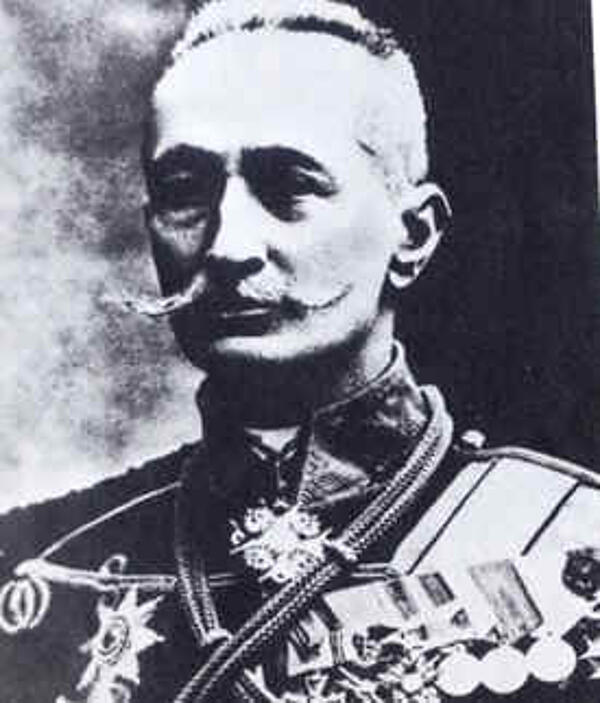The Brusilov Offensive
The Brusilov Offensive started in June 1916 and ended in August of the same year.
After the disasters of Tannenburg and the Masurian Lakes, the Russian army had fallen back to a line from Riga in the Baltic through to the Pinsk marshes near the Rumanian frontier - around 500 miles long.
The area was divided into three sectors including:
The North-West Front led by General Kuropatkin
The West Front commanded by General Evert
The South-West Front commanded by General Ivanov
All three commanders were reluctant to engage in an offensive against the Germans given the history of the battles that had gone before, but by 1916 the deficiencies in the equipment used by the Russians had been rectified. Soldiers were also receiving proper training and rifles were being produced at a rate of 10,000 per month.
Most of the Russian front lines also benefited from machine guns and artillery shell stocks, which had been built up during the relatively quiet winter months between 1915 and 1916.
This new and improved army saw its first attack in the spring of 1916 when the Russian military was called to aid the Allies during the German attack of Verdun. The Russians were tasked with diverting the Germans to the Eastern Front, and the initial phase of this task was very successful - the Germans were surprised by the severity of the Russian artillery fire and the Russians managed to advance.
However, the timid leadership of the Russian Army led to the withdrawal of the artillery and aeroplane support and soon Russian troops on the ground found themselves being attacked with poison gas. The army had to withdraw but the attack had demonstrated the Russian Army’s new capabilities.
The assist at the Battle of the Somme, the Russians had planned a major attack in the east that would force the Germans to split their forces. Ivanov was replaced by General Alexey Brusoliv who championed the offensive as the best way to win a war.
In April 1916, Brusilov had the chance to argue his case for an offensive attack on three fronts, and ultimately it was decided that he would launch once attack by the South-West Front that would be followed by two further attacks elsewhere.
Brusilov ordered the generals of the four armies under his control to set out their own plans fo attack, which he hoped would ensure the Germans could not work out where the main attack would be. He also reduced to give out any information that he felt could make it back to the Germans.
Brusilov used the time he had to produce detailed maps of the Austro-Hungarian lines and ordered his officers to study them to ensure that they were familiar with the fences, miles and trenches they would face. He also ordered advance trenches to be dug that were less than 100 metres from the enemy lines. With no reserves to call on, he was aware that his attack was all or nothing and so planned accordingly.

The attack began on 4th June with three of four of the armies seeing success aided by artillery bombardments. By 8th June, the Austrains were in full retreat and Brusilov set his sights on his main targets of Lutsk and Kovel. The attack on the former was a success, but the attack on the latter failed to start and Brusilov was told the West Front would only start its attack on 18th June. This allowed the Germans in the east enough time to get together the men they need to support the Austrians and all but doomed Brusilov’s offensive.
Brusilov also struggled with communication issues as his success had left his armies far apart. As a result, the forces advanced on two lines within their sector that went in the opposite direction to each other.
To add to Brusilov’s disappointment, the attack due on the 18th never materialised and men were instead transferred south to be used by Brusilov himself. This is exactly what he had wanted to avoid as it alerted the Germans to their plans. The Germans made use of their superior rail network and soon Brusilov was facing thousands of experienced men.
The major advances he had achieved soon disappeared and by 10th August the Russian advance halted entirely. By this date, the Russians had lost a total of 500,000 men to the Austrian’s 375,000.
The Brusilov Offensive - the only campaign in World War One to be named after a specific commander - came very close to victory but was ultimately deemed a failure as he did not achieve what he had needed to achieve, which was the transfer of German troops from the Western Front.
However, its failure was not due to Brusilov being incompetent and as such many historians have argued that the impact he could have had on the Somme may have been phenomenal.
MLA Citation/Reference
"The Brusilov Offensive". HistoryLearning.com. 2025. Web.
